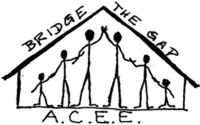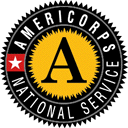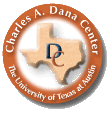HANDBOOK CONTENTS:
Working with Volunteers / Mentors
Coordinating After School Clubs & Activities
ACEE Home Page
Corporation for National Service: AmeriCorps
 Painter Hall Observatory The Painter Hall Observatory on the UT Campus (24th Street and Inner Circle Drive, near the Tower) is a great after-school night outing for students. The Observatory is operated by the UT Astronomy Department on top of Painter Hall, the old Physics Building. The facilities and telescope date from the 1930s, giving everything a step-back-in-time feel. All telescope and observatory functions (like rotating the dome) are manually operated, and sometimes, the student staffing the obersvatory will let kids operate some of these levers and cranks. A typical night will include a planet or two, binary stars, star clusters and maybe one of the brighter nebulae. For more information on Painter Hall viewing, contact Michael Yuan at juntao@astro.as.utexas.edu or 512-232-4265. Also look under the file "Painter Observatory" or "Stars" in Jennifer's Sanchez VISTA files and you will find the name of the contact person and phone number for the person she worked with. This trip is best for children in the second grade or higher. it is also recommended that this trip be done after the fall time change (not during Daylight Savings Time), so that children are not out so late. Set the date up with someone at the observatory at least one month before you want to go, and tell your observatory contact how many people will be there (the dome is small, so the number of people you can bring is limited). Ask if the graduate student staffing the observatory that night or a member of the Astronomy club at UT would be willing to speak to the kids that night. Also well-before the date of the event, ask AmeriCorps or the Vice Principal to secure a bus to transport the children from the school to the university and back. Get permission slips out promptly (they should also be in the folder both in Spanish and English) and returned before the trip. Jennifer noted that: "It is hot once you get up to the observatory and you have to climb some stairs, so dress comfortably." The observatory opens at 8 p.m., but Jennifer noted that "we had a guest speaker and pizza which we got donated from Mr. Gatti's." Students return back to the school at 10 p.m.. with their parents ready to pick them up.
|

